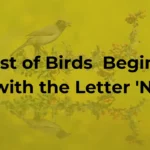The sheer variety available in the world of flowers is one of its most astounding features. You can find a wide variety of lovely, alluring flowers by simply concentrating on one letter of the alphabet. We’ll look at the names of lovely plants and flowers that begin with the letter “I” in this article.
From Ice Plant to Impatiens: The Complete List of Plants That Start With ‘I’

We have several pretty unique species of perennial plants and flowers with botanical names that begin with the letter “I,” however the list is not very lengthy. With iris, you simply can’t go wrong, and ‘Ming Treasure’ is one of the greatest. Try the 2007 Plant Delights/JLBG introduction Illicium parviflorum ‘Florida Sunshine’ if you want to add some color to your winter garden.
Read More about ‘I’-starting plants.
Ice Plant (Delosperma)
The term “ice plant” refers to a variety of taxa and species. Lampranthus and Delosperma are among the two most well-known genera. Warm-weather perennials, these plants bloom each year and are well-known for their vivid blossoms. The term “ice plant” refers to the plant’s microscopic hairs, which reflect light in a way that makes them look like ice crystals. The foliage is thick and succulent-like and changes color as the temperatures fall in the fall. Many varieties of ice plants are evergreen when it is warm.
Spring is the ideal time when ice plants start to blossom, and this process lasts the entire growing season. In temperate areas, it is ideal to sow these quickly-growing plants around midsummer; however, fall planting is preferred in hotter climes.
Iceland Poppy (Papaver Nudicaule)
Are you trying to find a vibrant, happy pop of color for your garden? The flowers for you can be Arctic poppies, or Papaver nudicaule. These floral perennials grow well in subarctic areas, but in warmer climes, they are frequently planted in the same way as annuals. They develop hairy or fuzzy flower stalks and feathery foliage. Each plant has four paper-thin, silky, and ruffled petals and is borne on a tall stem that is leafless and devoid of leaves. Arctic poppies are a particular species of poppy that come in a variety of colors, including red, pink, orange, yellow, and even white.
In the late winter or early spring, sow seeds in their permanent outdoor habitat. These very slow-growing plants can take some time, even though they sprout from seeds quickly. Even with their delicate-looking petals, Arctic poppies are resilient plants. These perennials make great deer-resistant landscaping options.
Impatiens (Impatiens)
The beautifully colorful, plentiful blooms of impatiens (Impatiens walleriani) plants, as well as their capacity to thrive in shade, make them one of the most well-liked bedding plants. Impatiens are typically cultivated as annuals, where their spring-to-fall blooming season fills the garden with color, despite the fact that in tropical climates they are actually perennial plants. Standard impatiens blooms are available in a range of hues, including white, pink, red, coral, violet, purple, and yellow, a more recent addition.
The customary season for impatiens planting in the northern United States and other regions with comparably chilly winters is in the spring after the risk of frost has passed.
Imperial Red Philodendron (Philodendron Erubescens)
Some of the most unusual and stunning plants to grow in tropical climates are philodendrons. There are over 400 different philodendron species in the world, including the ‘Red Emerald’, Philodendron erubescens, which are indigenous to South American rainforests and Costa Rica. P. erubescens is a vindictive climber. The leaves of these plants are very prized because they have attractive reddish and colorful undersides that provide a wonderful display as they fall down a growing surface. P. erubescens should be grown in a secure area because it is harmful to people and animals like other philodendrons are.
The plant can grow up to 60 feet tall in its natural habitat, and if its link to the ground is broken, it will occasionally switch over to entirely epiphytic growth.
Inaba Shidare Japanese Maple (Acer Palmatum Inaba Shidare)
Small Japanese maples like the Inaba Shidare are renowned for their feathery deep purple to scarlet leaf and compact cascading shape. All Japanese maple trees of the dissectum variety can be recognized by their palmate, deeply-cut, 7-lobed leaves, which measure 6 inches long in this case. The Inaba Shidare Japanese maple grows best in temperatures that are neither too hot nor too cold; in cooler places, it needs full sun, while in hotter climates, it needs some protection from the hot sun. It does best in somewhat acidic, wet, and well-draining soil.
Give full sun to Inaba Shidare Japanese maple at the cooler end of its range. It benefits more from afternoon shade the further south you are.
Incrediball Hydrangea (Hydrangea Arborescens)
A broadleaf, deciduous flowering shrub, the Incrediball® hydrangea (Hydrangea arborescens ‘Abetwo’ Incrediball) is a popular landscape plant. It is a hardy cultivar of the smooth hydrangea (Hydrangea arborescens), like the Annabelle hydrangea, and blooms on fresh wood. However, Incrediball has stronger branches and larger flower heads than Annabelle. The cultivar name is “Abetwo,” while “Incrediball”—not “incredible”—is the name of a trademark. The term “Incrediball” was most likely created to draw attention to the enormous size (up to 12 inches) of the floral “balls”.
There are numerous ways to incorporate Incrediball hydrangea bushes into your landscaping. These bushes can be used alone as specimen plants because of their appealing broad, rounded, highly serrated, dark green leaves.
Indian Grass (Sorghastrum Nutans)
The warm-season grass known as wood grass (Sorghastrum nutans), which is native to North American grasslands, is tall, bunching, and utilized as feed for animals. A common decorative grass, it is useful for producing a natural meadow or wildlife garden, serving as an upright backdrop in garden borders, or as the dominant mass feature. When the fast-growing grass is in flower, it can reach a height of six feet, and from late summer to early October, the seedheads add a burst of yellow-to-orange color.
The short rhizomes of this grass can continue to offer interest to your garden all year long since they can stand upright in the winter when dormant. Green, grey, and even blue tones are added to the environment by the grass blades.
Indian Hawthorn (Rhaphiolepis Indica)
Although it usually takes on a tidy, rounded appearance, the Indian hawthorn (Rhaphiolepis indica) is a tiny shrub that can reach heights of 3 to 6 feet. Despite its widespread name, it grows in other countries as well. It is from China and is grown in Australia and other regions of Asia.
It grows well as hedges, foundation plantings, and other landscape elements in warmer areas. It even grows well in containers. It is non-toxic to people or animals, just like other hawthorn plants. Furthermore, it is not an invasive species.
The somewhat golden leaves of this evergreen shrub develop into a rich green hue as it ages. Its oblong leaves have serrated edges and a leathery texture, and they range in length from around 2 to 4 inches.
Indian Paintbrush (Castilleja Cocinea)
A hardy and vibrant wildflower that grows in open spaces like grasslands, prairies, or meadows is called an Indian paintbrush, also known as a scarlet painted cup. The first year of this biennial’s growth creates oval rosettes, and the second year it produces stalks with small blooms surrounded by vibrant and striking bracts. In fields, wildflower gardens, meadows, and prairies with open, sandy soil where they can draw nutrients and water from host plants, Indian paintbrush thrives. Despite being completely trouble-free, this plant might be hazardous to animals.
Join 25,000+ smart readers—don’t miss out!








